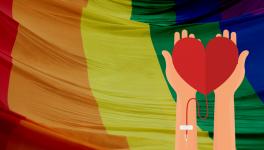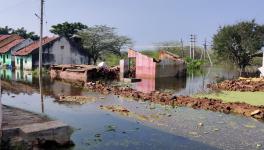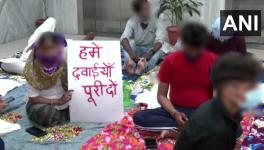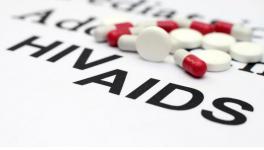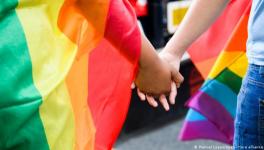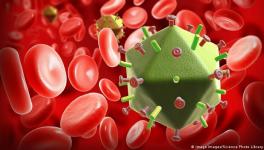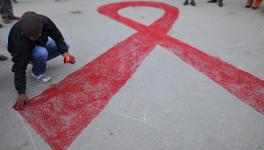UN AIDS Report 2018: Death Rates Have Gone Down but Discrimination Remains
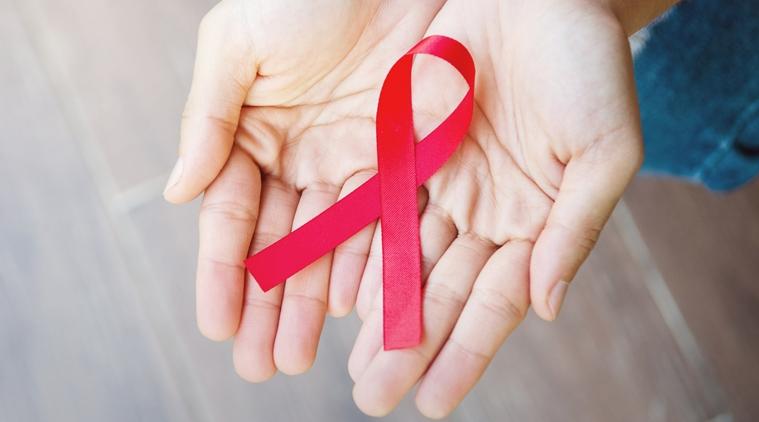
Image Courtesy : Indian Express
The United Nations AIDS Update Report 2018 titled ‘Miles to go: closing gaps, breaking barriers, righting injustices’ says that Asia and Pacific regions are moving towards a brighter side in HIV/AIDS response. Globally, the report noted, the progress is not up to the mark. According to the report the number of AIDS-related deaths is the lowest this century, with fewer than 1 million people dying each year from AIDS-related illnesses. According to the report, 3 out of 4 people living with HIV now know their status, which is the first step to getting treatment; 21.7 million people are on treatment, and this is a major progression from 2.3 million people in 2016.
However, the report highlighted the continued discrimination of the ‘key population’ and violence that this population faces globally. The report recognizes Female Sex Workers (FSW), people who inject drugs, Gay men and Men who have Sex with Men (MSM) and transgender women as the key populations at higher risk of infection. It says FSW are 13 times more likely to get infected by HIV; people who inject drugs are 22 times more likely; Gay men and MSM and Transgender women are 28 and 13 times respectively, more likely to get infected.
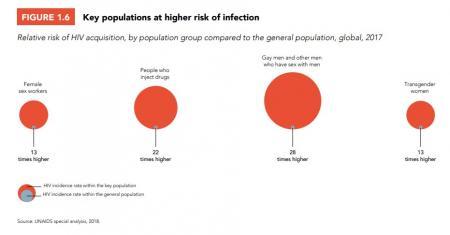
Despite all the global and national programs, as the report says, the results have not been very promising. It is a multifaceted problem: lack of proper public health structures, investment in educating the risk groups and also in the access to the available treatments. The stigma associated with the HIV/AIDS across the cultures is a major influencing factor in stopping these programs from reaching out to the higher risk populations. FSW, Drug users, Gay men, MSM, and Transgender women face stigma in the society as it is; HIV/AIDS and misinformation of them being the carrier of the disease further discriminates them. The UNAIDS report extensively deals with the state of discrimination the HIV/AIDS community faces.
According to the report, for example in India, 30 percent of Female Sex Workers face physical violence, 10 percent of Gay men and Men who have Sex with Men face sexual violence, and 20 percent of them face physical violence. 40 percent of the people who inject drugs face physical violence. These high risk populations in India are also legally vulnerable sections.
Section 377 of Indian Penal Code (IPC) for example criminalises homosexual acts and thus the homosexuals. The Supreme Court of India is hearing a curative petition to strike down the draconian law. One of the arguments that were put forward by the NAZ foundation in 2009 was that it was already very difficult to reach out the Gay community with the HIV/AIDS prevention programs and criminalising them would make it even more difficult.
Nine years from then, now, in 2018, the argument has again been the age old hate filled belief that homosexuals cause HIV, and hence need to be criminalised. Dr. Amit Sengupta of People’s Health Movement speaking to Newsclick noted that, it is a well-established “fact” that the major factor in transmission of the disease is heterosexual sex. He explained that the notion that HIV is spread only through same-sex encounters is antiquated.
The National AIDS Control Organisation (NACO), established in 1992, is a division of the Indian Ministry of Health and Family Welfare. Their report notes that the major route of HIV transmission in India is heterosexual sex - amounting to 87 percent; followed by transmission from Parent to Child (5.0%) and unknown cause (3.0%). Injecting Drug and Men having sex with Men contribute two percent each to the transmission of HIV among individuals. Blood and Blood products contribute only 1.0%.
The questions of how the epidemic started and who the culprit is have been speculated upon for a longtime now and there is no evidence to prove any of the answers to this question. Dr. Sengupta pointed out that the important question here is not who caused the disease first, but what causes it. And the answer to that question is, it is the practice of unsafe sex among heterosexuals and homosexuals. He further explained that the public health approach to reduce transmission shouldn’t be making something illegal. He said it is impossible to prevent transmission through homosexual sex by criminalising it- as it is the stigma associated with the disease prevents the victims to be open about it. criminalising would only make it worse. Giving example of criminalising sex work in the country, Sengupta wondered if it has helped at all, in preventing HIV/AIDS.
The UNAIDS report however shows that Cambodia, India, Myanmar, Thailand and Vietnam have had sustained and successful interventions which has reduced the deaths by HIV/AIDS between 2010 and 2017. The report shows a noticeable progress in case of India. According to the report, in India, new HIV infections dropped from 120,000 in 2010 to 88,000 in 2017, AIDS-related deaths from 160,000 to 69,000 and people living with HIV from 2,300,000 to 2,100,000 in the same time period. This was possible, the report says, because of sustained and successful intervention programs that are in place in the country.
The report suggests indicators to measure the drivers, facilitators, manifestations and outcomes of HIV-related stigma and discrimination. Percentage of women and men aged 15–49 years who report discriminatory attitudes towards people living with HIV and Percentage of health facility staff who hold stigmatizing views about people living with HIV are the major indicators of the discriminatory attitudes towards the infected population, according to the report are the measures of the drivers of HIV-related stigma and discrimination.
The report also places an equal responsibility on the laws and policies of the countries across the globe. Criminalising the transmission of, non-disclosure of or exposure to HIV transmission, transgenders, sex workers, same-sex sexual acts, for example, are a few facilitators of transmission listed in the report.
Get the latest reports & analysis with people's perspective on Protests, movements & deep analytical videos, discussions of the current affairs in your Telegram app. Subscribe to NewsClick's Telegram channel & get Real-Time updates on stories, as they get published on our website.









